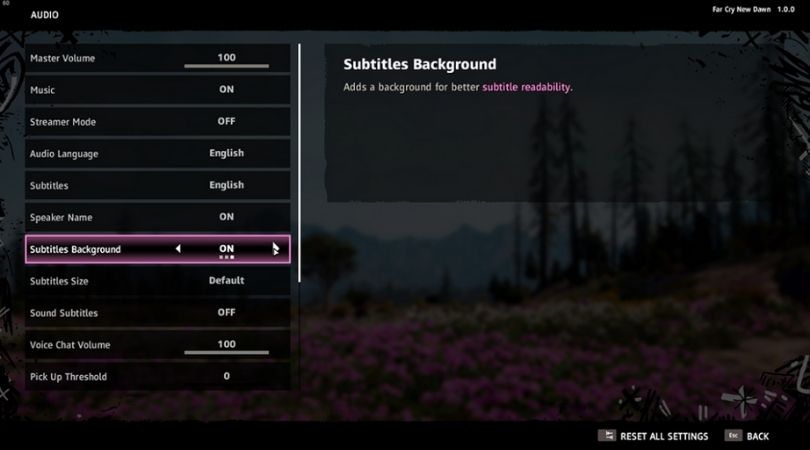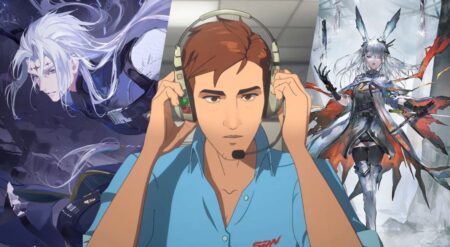
We need to talk about Far Cry New Dawn, the newest game in the Far Cry franchise from publisher Ubisoft and a direct sequel to Far Cry 5. The game takes place in a post-apocalyptic Hope County 17 years after the nuclear bomb was dropped by Joseph Seed at the end of Far Cry 5. Now, the Highwaymen and their leaders, the Twins, rule Hope County and the good people who survived hope to take back their land from another ruthless villain. Unfortunately, they may have to team up with Joseph and his terrifying cult to gain any traction against the Twins’ militia.
I personally, loved Far Cry 5 and overall, the game got fairly positive reviews, but most of the reviews for Far Cry New Dawn have been mixed with the game current sitting at a 72 on Metacritic. Most of the reviews I read described the game as tedious, a bit boring, and heavily pushes microtransactions. It feels like a $40 dollar cash grab and outside of it being pretty it is very clear not nearly as much thought or passion was put into as Far Cry 5, and after playing it for about 30 hours, I agree.
However, there is something this game does better than anything I have ever seen in any game I have previously played: subtitles.
I have mentioned in the past, I got back into gaming once I became chronically ill and hobby has become a point of pride for me. Gaming keeps my anxiety at bay, helped me find a community, and continues to help me find inspiring stories every day. I also previously wrote about how gaming changed for me when I became disabled. One of the main tools I use to better play video game is subtitles. I suffer from vestibular migraines with a complicated aurora (a mouthful to say the least) which means sounds sometimes cause me to hear only high pitch ringing or nothing at all for moments at a time. Sometimes it will last for seconds, other times much longer. Because of this, subtitles have become a necessity for playing video games.
Most games (other than apparently the Spyro Reignited Trilogy) offer traditional dialogue subtitles. That being said, disabled gamers have been asking for more closed captioning for a while. These are subtitles that show a description of what is occurring and include important non-dialogue audio. Most recently, Shadow of the Tomb Raider did an excellent job at utilizing environmental subtitles, explained in the tweet thread below.
https://twitter.com/SusanCantPlayIt/status/1039827873618649088
In Far Cry New Dawn, Ubisoft takes captioning to a whole new level. The game not only offers environmental captions like in Shadow of the Tomb Raider but does so while pointing in the direction it is coming from. Players can see visual prompts about important sound events near them.
Even while my brain is trying to catch up to what sounds are occurring, I can keep playing because the visual cues tell me where gunshots, explosions, fires, animals, or whatever threat is heading from. While the game isn’t perfect and there are a few moments that you have to rely on hearing to accomplish a mission, the game is leaps and bounds above its competitors.

The menu for Far Cry New Dawn‘s subtitles has a lot of options from font size, language, speaker name, to turning visual sound prompts on and off. It is also customizable depending on how you want to experience the game which is amazing for all gamers. What is also confusing to me, is that outside of the disabled community and deaf reviewer Susan from Can I Play That, who sadly as of this posting has passed, I heard no mention of the subtitles or their vast customization options. Ubisoft has made fantastic strides for disabled gamers but because there are so few or apparently no disabled reviewers being employed by major publications like IGN, GameSpot, and so on, I almost skipped this game. I believe hearing players could benefit from a lot of customization offerings within this game, especially the visual prompts of knowing which direction sound queues are coming from.
Despite its flaws, and there are many, this game is worth it to me because of the subtitles and the representation of a disabled character in a post-apocalyptic world who is treated in a positive light. In the game, you rescue Grace Armstrong, who was a Sniper in Far Cry 5 and one of the companion characters that could have travel with you. In this new world, Grace is blind and while she can no longer shoot, she options instead to build weaponry and train new troops for your stronghold. That representation of a disabled character, especially in as harsh a world as Far Cry New Dawn is important. Add that to Ubisoft’s clear understanding of what disabled players, or at least those with hearing disabilities, need shows they care about all gamers and are striving to be more inclusive.

This inclusivity is important and is an ongoing conversation within the gaming community. Overall, I hope Far Cry New Dawn starts a conversation about what developers can do to further create accessible options for gamers. But I also hope it brings to light the need for reviewers and outlets to have disabled reporters on their staff. Disabled people game too, clearly Ubisoft knows this. Knowing about subtitles and other accessibility features should be as important to a review as gameplay mechanics. Similar to how I wasn’t aware that Sypro: Reignited Trilogy didn’t have subtitles in IGN’s review of the game, I would have loved to know that this game was revolutionary in theirs.
Until then, there are amazing people doing great work for disabled gaming. As I mentioned above, Can I Play That is a phenomenal site that covers a variety of game and breaks reviews down by deaf and mobility limitations This is great, since not all disabilities are created equal. In addition, more websites have started breaking down what accessibility options are offered in games as Comicbook.com did for Shadow of the Tomb Raider. Still, most do not have disabled specific reviews.
Disabled representation in games is abysmal but what has become more apparent is that it is just as bad in the newsroom. My hope is this game and its revolutionary accessibility in regards to its captioning with changing the conversation for good on how games journalism should be covering accessibility.







